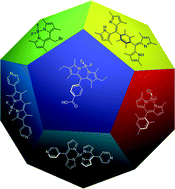Luminescent metal–organic frameworks based on dipyrromethene metal complexes and BODIPYs
Abstract
Luminescent metal–organic frameworks (MOFs) represent interesting materials for applications in detection and sensing, for example. While most of these MOFs are based on carboxylate, azole or pyridyl ligands, the dipyrromethene moiety, also referred to as dipyrrin, seems also rather appealing. Indeed, this bis-pyrrolic backbone can be readily functionalized and can act as a monoanionic chelate under basic conditions, allowing the preparation of a variety of coordination compounds. Some of its metal complexes as well as its boron difluoride derivatives, BODIPYs, feature good stability, high quantum yield and tuneable emission wavelength. Therefore, several approaches have been proposed for their incorporation in MOFs to afford materials with interesting photophysical properties: self-assembly of ligands bearing multiple dipyrromethene moieties with metal cations or of luminescent metal complexes bearing peripheral coordinating moieties, stepwise construction of heterometallic architectures using metal complexes or BODIPYs as metalloligands, post-synthetic functionalization of the pores or the faces of MOF crystals by BODIPY dyes. These synthetic strategies as well as the photophysical properties of the resulting materials are reviewed in this highlight article.


 Please wait while we load your content...
Please wait while we load your content...